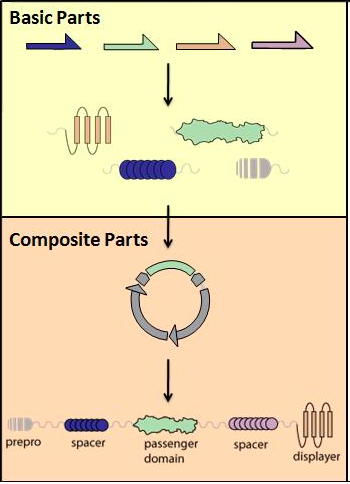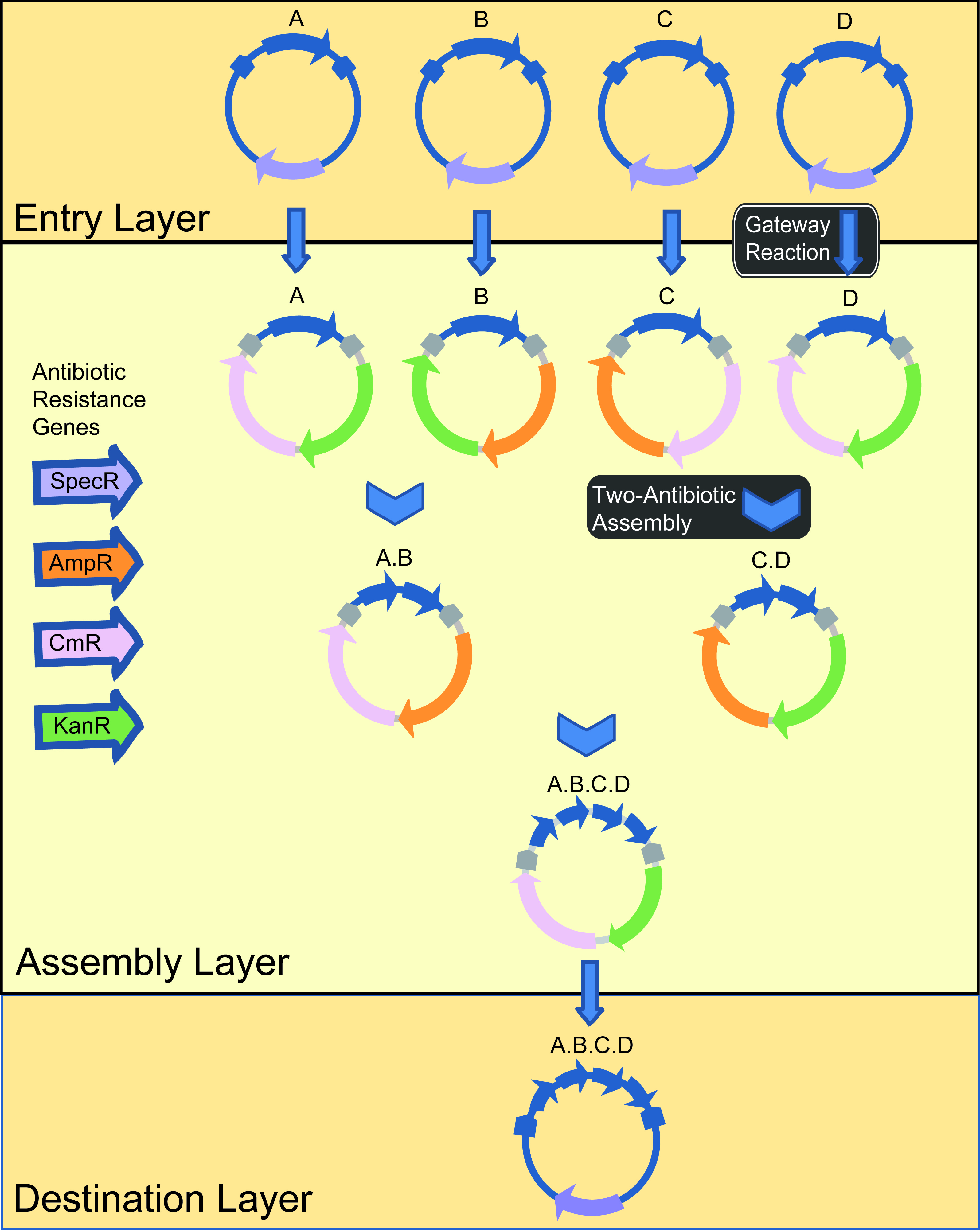Team:Berkeley Wetlab/Automation
From 2009.igem.org
Jennbrophy (Talk | contribs) (→Two AntiBiotic Assembly) |
Jennbrophy (Talk | contribs) (→Two AntiBiotic Assembly) |
||
| Line 23: | Line 23: | ||
===Two AntiBiotic Assembly=== | ===Two AntiBiotic Assembly=== | ||
[[Image:BerkeleyAssembly.png|450px|center]] | [[Image:BerkeleyAssembly.png|450px|center]] | ||
| - | * | + | ===CloneBots=== |
| - | + | * 2008 Berkeley Wetlab team | |
| + | ===Clotho=== | ||
*liquid handling robots | *liquid handling robots | ||
Revision as of 18:55, 19 October 2009
Contents |
Why Automate?
Our approach to characterizing cell surface display required us to make a lot of parts.
Making Basic Parts
The first step in any synthetic bio device is to make basic parts. Making basic parts typically entails the mixing of many oligo nucleotides and PCR. Our team needed to make a lot of basic parts, so we developed a method for doing cheap in-house gene synthesis.
- used software called oligoDesigner
- IDT 96well plates
- liquid handling robot
Making Composite Parts
The next step, after making new basic parts, is to assemble those basic parts into composite part devices. There has been a lot of work being done at UC Berkeley to automate the process of composite part assembly. We were able to implement many newly developed techniques to create a large number of composite parts.
Two AntiBiotic Assembly
CloneBots
- 2008 Berkeley Wetlab team
Clotho
- liquid handling robots
Success!
Using our newly developed automated assembly processes we were able to make over 800 parts (both basic and composite) in one summer! This magnitude of part making is unprecedented in iGEM competitions and enabled us to test a very large number of variations on cell surface display systems.
Success Rates
The assembly scheme we developed works just as well as assembly by hand and is much faster.
- percentages
- see Jenn Brophy and Gabriella Guzman's notebooks for notes on assembly.
- 2ab assembly
- Clotho
- statistics
 We made a lot of parts with a robot.
We made a lot of parts with a robot.
 "
"







